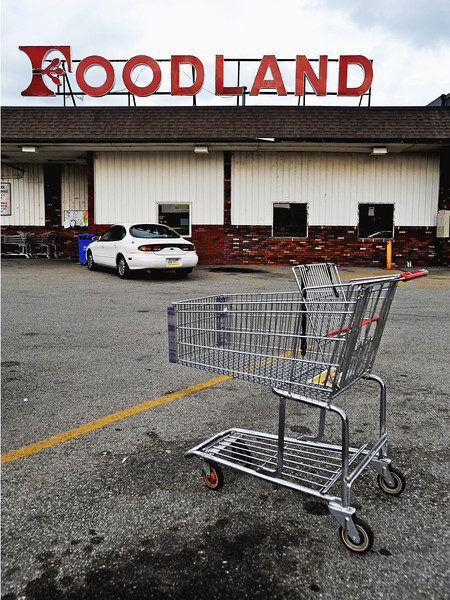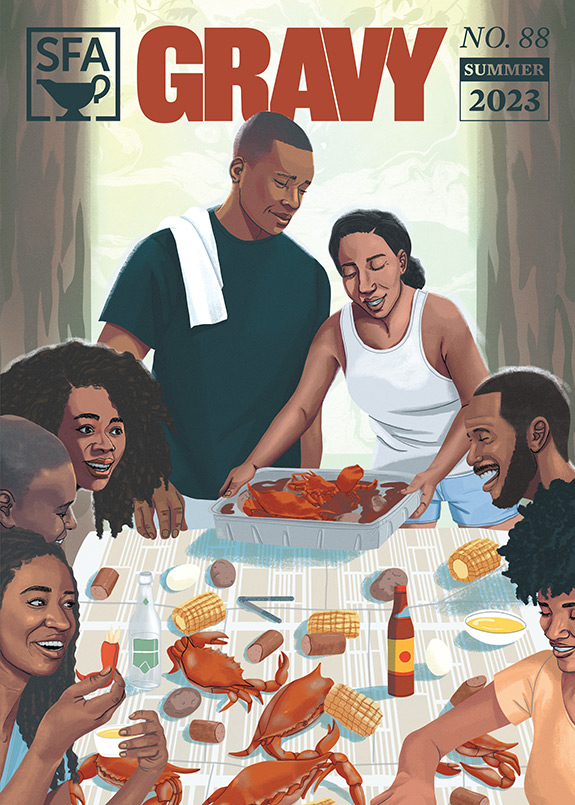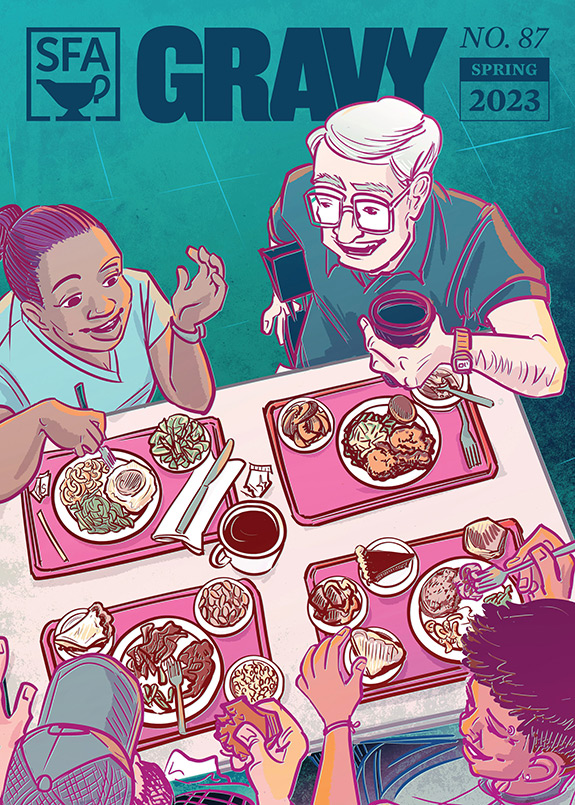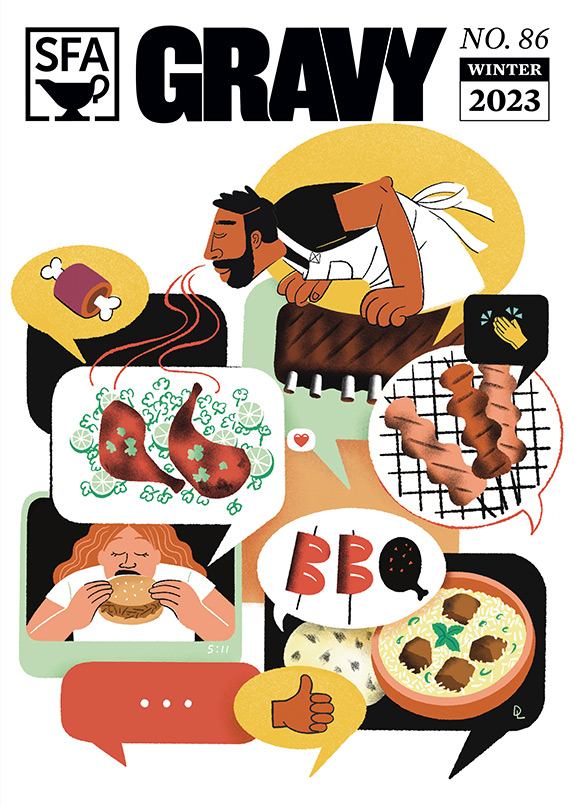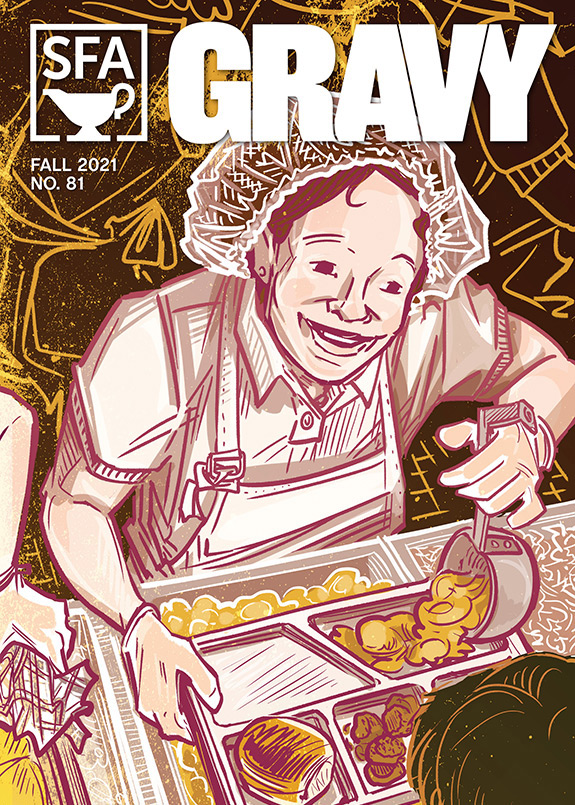
Taking the Wild Out
The beasts were wallowing below us, unseen.
by Abigail Greenbaum
People from Atlanta call Tommy Haskins several times a week, begging him to sell them feral hog. “It isn’t legal to sell the hogs we hunt,” he tells them. “But you can come down to Twiggs County and shoot one.” In order to sell meat to the general public in Georgia, the animal must arrive alive at an approved processing facility, and be inspected prior to slaughter.
Feral swine eat a low-fat diet. Most are too lean to use for making bacon, even the 160-lb hogs that Haskins and his clients bring down. Folks searching for feral hog are often immigrants from Vietnam, where lean pork is wrapped with banana leaves in a dish called gio lua.
Local food advocates also clamor for field-shot pork. Afield: A Chef’s Guide to Preparing and Cooking Wild Game and Fish, written by the Texas hunter and chef Jesse Griffiths, includes recipes for smothered wild boar chops with anise brine and wild boar rillettes. Haskins doesn’t bother with anise brine. He prefers hickory-smoked hams, basted with apple juice.
On his property southeast of Macon, Haskins rarely goes a day without glimpsing hogs, which he calls “piney woods rooters.” These hogs have mixed pedigrees. Some may have descended from Spanish swine introduced in the 1500s. Others are released or escaped domestic pigs that bred with Eurasian wild boars that were imported for hunting.
Haskins refuses to sell me hog from his freezer, but he allows me to join a guided hunt on his property. I spend eight hours in tree stands in a swamp where hogs seek thick cover and wallows. In this part of Georgia, wild hogs are considered an invasive species, so it is legal to hunt them over bait year round. Haskins stocks his metal feeders with corn and rotten peaches.
The property edges a chalk mine, and planes from Warner Robins Air Force Base drone above. The floodplains are wide here, and the soil is white and sandy, since this land sits south of the fall line. Here on the Ocmulgee River corridor, feral hogs devastate fields of soy, cotton, and grain sorghum, and farmers pay hunters to exterminate the beasts. Haskins pulls up Google Earth on my phone and shows me hog-torn craters in his sunflower fields.
These hogs acquire the violent tendencies and long tusks of feral animals after just one generation off the farm. Although owls and coyotes sometimes kill piglets, no other predator threatens the adult hogs. The hogs damage both cultivated and wild areas—trampling fields and riverbeds and competing with native wildlife for food. Hogs also harbor diseases such as brucellosis and pseudorabies, which can also infect cultivated pigs and humans who eat feral hogs. Because of these diseases, captured feral hog can’t be sold in Georgia Department of Agriculture–approved livestock markets.
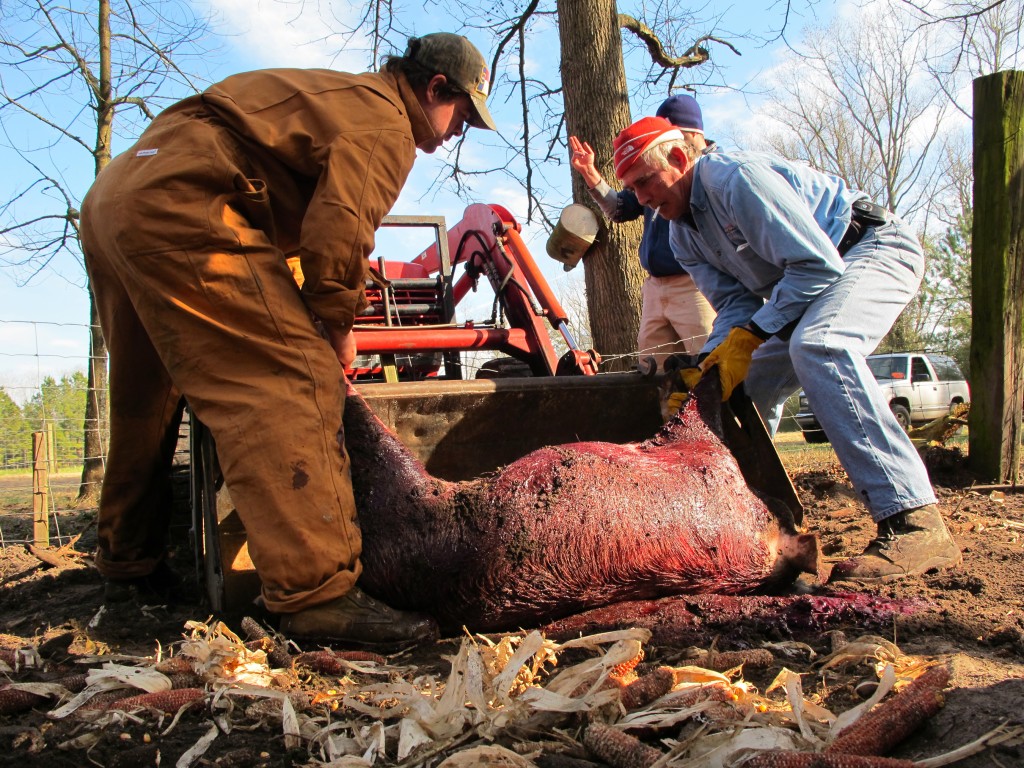
I spend a night in Haskins’s swamp with a man who designs stealth bombers and two hunters from Ohio. They bring down six hogs. I never get to sight a single one through the green LEDs that night hunters attach to their rifles; I merely hear them splashing in the water-oak thickets. The next morning, when I see the killed hogs laid out in bloody truck-beds, their black or red coats crusted with mud, I flash back to the moment when they were wallowing below us, unseen. And I recall hearing that they’re capable of splintering a human shinbone with a single snout thrust.
To find hogs in the swamp, some Georgia hunters use dogs. Bay dogs find and stop the hog. Then a catch dog, often a pit-bull, holds the hog by its ear while the hunters tie down and knife it. Such primal and violent sport seems somehow warranted. The hogs are a toothy and aggressive reminder of how civilization can go wrong when what was meant to sustain us now roots and ravages. Where I live, north of Atlanta, some doomsday enthusiasts stockpile assault rifles, while others bury food-filled freight trailers in the ground. The war against hogs might be another version of end-times preparation.
Haskins brings all his clients’ hogs to Thomas Deer Cooler, a meat processor. Vinyl curtains hang over the slaughterhouse where show cattle are killed. A Georgia license plate tacked above the door reads give wildlife a chance. Fliers offer hog extermination services. Neither Haskins nor I have slept much when we meet early in the morning at the processor, where he fills my cooler with chops and bratwurst and ground sausage. The Ohio hunters are there, too, strapping garbage bags of surplus meat to a tailgate drop rack. Standing amid so much extra meat, I think again of the would-be hog cooks calling Haskins, unable to buy.
Maybe I’m just on edge from dozing in a tree-stand. But as Haskins reminds me to cook the meat to an internal temperature of 170 degrees to kill bacteria, I feel somehow transgressive. Later, because I remain nervous about brucellosis, I consult a friend who works in clinical microbiology about how to prepare feral hog safely. In addition to hitting the right temperature, she suggests that I soak the meat in buttermilk to “take the wild out of it.”
On a rainy Sunday one week later, my scientist friend and her husband join me for feral hog dinner. The back ham chops turn out rich. Not heavy or piney like some wild hog I’ve tasted. And the meat splits easily under the pressure of our forks. The forager’s diet, not the borderline legal status, gives feral hog its distinctive tang, but I also sense a particular pleasure that comes from setting my table somewhere between cultivation and wildness.
Abigail Greenbaum received her MFA at the University of Mississippi and now teaches English and writing at Berry College in Georgia.
***
This story first appeared in Gravy #48, a food-and-crime issue guest edited by Jack Pendarvis. To read more from this issue, click here or here.



